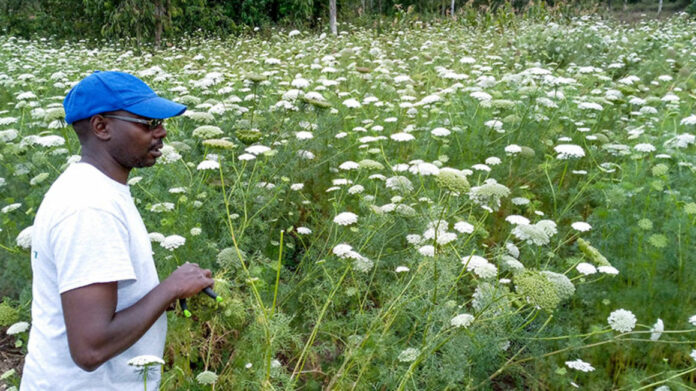Peter Mwangi, a resident of Naromoru in Nyeri County, is a proud farmer after having ventured into the cheapest-to-manage yet profitable flower business.
The Egerton University agriculture graduate grows Ammi variety of flowers on a half an acre farm, a venture he started in 2019 inspired by a friend.
“I wanted some extra cash and show my younger folks in the village that they can grow flowers profitably instead of over-relying on employment from local flower farms,” he said.
According to Mwangi, who teaches agriculture and biology, the Ammi flower varieties are easy to manage as they require minimal concerns about pests and diseases.
He sells the produce to an export firm in Thika at Sh4 per stem. However, there are also brokers who buy it for as low as Sh2 per stem.
“I sell Ammi white to brokers at varied prices, which can be as low as Sh2 or as high as Sh10 per stem, depending on the market forces of demand and supply,” he said.
Mwangi reveals that the amount that a farmer can earn per acre depends on the price per stem. For instance, he says, if a stem is sold at Sh3, one can make around Sh150,000 in five months, and if a stem is sold at Sh9, then a farmer can earn up to Sh450,000.
Oscar Kasirimo: I lost hope in employment after graduating, now I make money from farming
The Ammi flower is mainly used to blend other flowers because of its distinct white and green colors, which make a bouquet look beautiful. The flowers are odorless and are sold in grades. Grade A goes for Sh4 per stem, Grade B Sh3, and Grade C Sh2.
Experts say to get big stems, one should not plant during the rainy season. The more sunshine they get, the bigger they bloom.
The flowers perform well in an open field without a greenhouse. Additionally, they can tolerate different soil conditions but do well on moist soil with good drainage.
According to Bernard Lang’at, an agronomist, farmers should target to harvest between October and June, which is high season, to maximize returns.
Once planted, the seeds germinate in seven days, and the flowers are usually ready for harvesting after three months.
Nelson Maina, a researcher at Kenya Agriculture Research Institute (KARI), says one acre of Ammi flowers can give a farmer an average of 280,000 to 320,000 stems.








